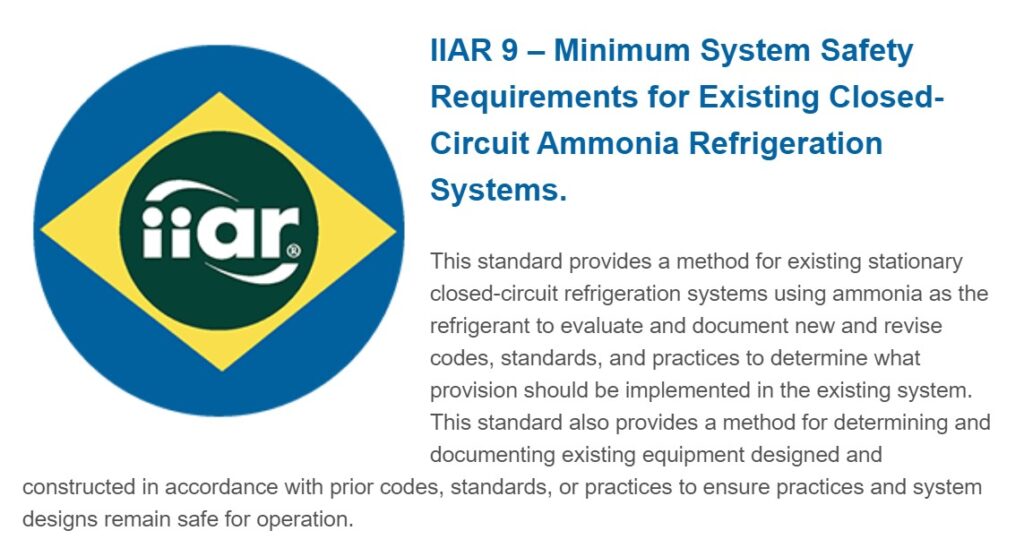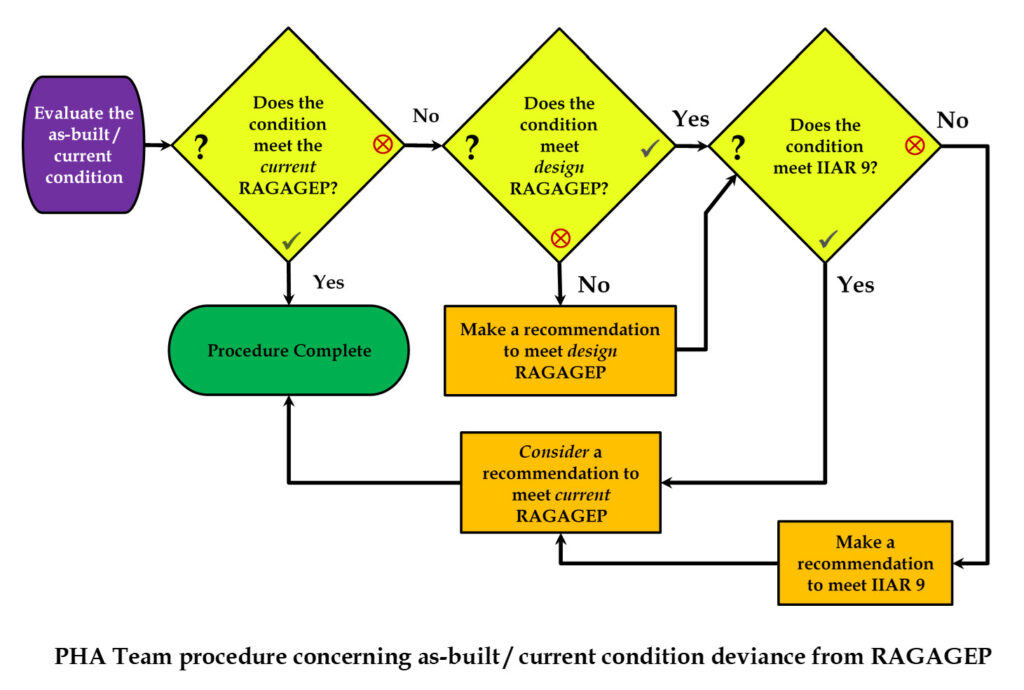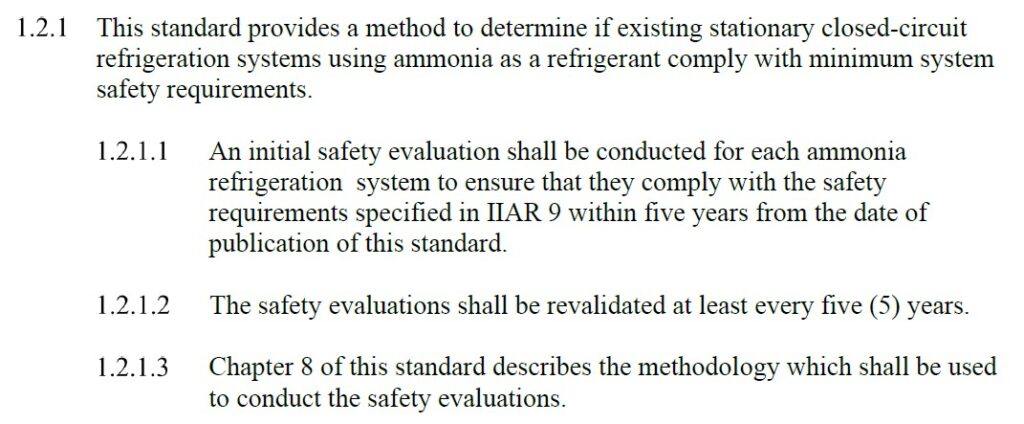What you need to know about the new standard IIAR 9
IIAR 9-2020 has been officially released.

This is a new standard and it will require you to do certain things differently going forward.
What is it?
This document is a standard for minimum system safety requirements for existing closed-circuit ammonia refrigeration systems. The safety focus is on persons and property located at or near the premises where the refrigeration systems are located…
This standard provides a method to determine if existing stationary closed-circuit refrigeration systems using ammonia as a refrigerant comply with minimum system safety requirements.
For practical purposes it’s a way to deal with a system designed under an older RAGAGEP that doesn’t necessarily require you to update to the latest version of IIAR 2.
What’s the problem it’s solving?
How do you build a defensible case that your system built to an older code or standard is still designed, maintained, inspected, tested, and operating in a safe manner if it doesn’t meet the current code or standard? In PSM I refer to this issue as the d(3)(iii) trap. Here’s the relevant law:
1910.119(d)(3)(iii) For existing equipment designed and constructed in accordance with codes, standards, or practices that are no longer in general use, the employer shall determine and document that the equipment is designed, maintained, inspected, tested, and operating in a safe manner.
The way we traditionally did this is in the PHA where we either recommended the facility upgrade to conform to the latest version of the code or standard, OR has the PHA team build a defensible case that the alternative arrangement in the as-built / existing system was at least as safe as meeting the new code or standard. As you can imagine, this was not an easy thing to do.
How does this new standard affect me?
First, if you are already compliant with the current RAGAGEP (such as IIAR 2-2014a) then nothing much changes for you. If you are not compliant with the current IIAR 2 then it provides a different fallback position, because if you meet the requirements in IIAR 9, you now have an ANSI certified RAGAGEP that helps you defend the decision not to update to the current code or standard. Put another way: If your system is designed to IIAR 2-1999, then you might be able to use IIAR 9-2020 as an alternative to compliance with IIAR 2-2014a.
Put in a flowchart, it looks like this:

Please note: this does not change NEW additions and systems – they are evaluated under current RAGAGEP.
Is there anything else it requires?
The new standard requires an initial evaluation for IIAR 9 compliance within 5 years. It also requires that you re-evaluate that IIAR 9 compliance every 5 years thereafter.

How should I comply?
As with all compliance topics, there are lots of ways to get from here to there. I’m going with the EASIEST method which is: incorporate this analysis in your PHA. The requirements for evaluation methodology allow for a semi-quantitative technique for risk-ranking which is what you are already doing if you are using traditional IIAR PHA What-If / Checklist methodology.
To that end, I’ve converted every requirement in IIAR 9-2020 to a Checklist and included that checklist in with the existing PHA checklists for IIAR 2 compliance.
So, the next time you revalidate your PHA, if you use the new PHA templates you will automatically be performing this new required IIAR 9 evaluation. I’ve updated the PHA report template, the PHA worksheets, the PSI RAGAGEP letter templates, and the MI-EL1 to reflect these changes as well. Check the template change-log for details.